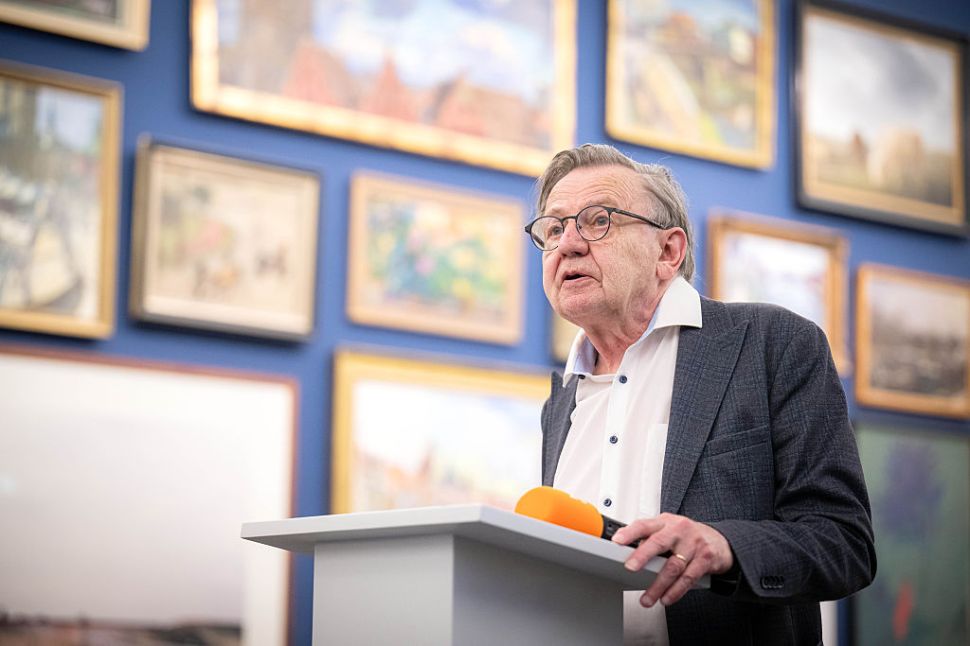Acquiring artworks and antiquities intelligently requires knowledge in several areas—art history, the art market, conservation, art law and perhaps even finance, and there are a variety of degree programs covering those fields. What’s missing, however, is professional-level training in what’s known as provenance research, or the study of an object’s ownership history from its creation to the present day. This kind of research is critical because so many objects have been removed illegally from historical sites or, in the case of Nazi-era Europe, forcibly taken from private collections. An untold number of such artworks and antiquities continue to surface for sale and are housed in the permanent collections of museums in the U.S. and Europe.
If you’re an art appraiser, collector, dealer, museum curator or registrar, knowing how to trace an object’s history—and whether it was stolen or looted—has become essential. Yet “there is no professional training for provenance research,” Lisa Duffy-Zeballos, director of art research at New York’s International Foundation for Art Research (IFAR), told Observer, even though “more and more people are being held responsible for this knowledge.”
SEE ALSO: Laura Alba Takes Us Inside the Prado’s Groundbreaking Art Authentication Software
Duffy-Zeballos is referring to master’s degree programs focused on provenance research, of which there are currently none in the United States. Looking to fill the gap, IFAR, a 55-year-old nonprofit that supports arts institutions with information on fakes, forgeries, frauds and authentication, launched a seven-class online course called, simply, Introduction to Provenance Research. The latest session, taught by Duffy-Zeballos with art historian Theresa Kutasz Christensen, kicked off yesterday (May 6).
In each session, participants are introduced to the online tools and databases used to track stolen and looted art and artifacts—such as those maintained by IFAR, Interpol and the FBI—and shown how to consult archives to trace where items were created, exhibited and sold. They are also assigned to small groups to investigate objects with “gaps in provenance,” Duffy-Zeballos said.
At institutions such as the Museum of Fine Arts Boston, the Art Institute of Chicago, the Metropolitan Museum of Art, the Philadelphia Museum of Art and the Museum of Modern Art, full-time provenance researchers have described their training as largely on the job. This course mirrors that hands-on approach. “It’s a kind of learning by doing,” Lindsey Schneider, IFAR’s executive director, told Observer. There’s no clear career path for provenance researchers. “We designed our course to be skills-based rather than a theoretically based program focused on why provenance is important.”
Today’s provenance researchers must be fluent in a wide range of knowledge, from identifying culturally significant objects to understanding international laws on cultural patrimony and export embargoes. Smugglers routinely attempt to evade these laws, and the course trains participants to spot fake documentation, verify physical characteristics that may raise red flags and evaluate the legitimacy of various records, whether invoices, ownership transfers or export licenses. “Those things can be difficult to research,” said Duffy-Zeballos, “but it is possible. It all depends on the object. But actually, being able to recognize fake documentation is something that we go through.”
Artworks stolen during the Nazi era have been a central focus of provenance research over the past 30 years, especially since 1998, when the U.S. Department of State and the U.S. Holocaust Memorial Museum hosted a landmark conference. Representatives from forty-four countries, along with thirteen nongovernmental organizations, museums and auction houses, convened to produce the “Washington Principles,” which declared that “art that had been confiscated by the Nazis and not subsequently restituted should be identified” and returned whenever possible. Compliance with those principles has varied. Art stolen by Nazi officials in the 1930s and by the German military during the Second World War tends to make the biggest headlines—partly due to the value of individual pieces—but Duffy-Zeballos emphasized that any understanding of provenance research has to go far beyond this era. “A growing field is in the area of Buddhist antiquities, colonial repatriation and Native American objects,” she said.
In the first few months of 2025, U.S. museums have returned antiquities to countries around the globe. In February, the Metropolitan Museum of Art repatriated to Greece a 7th-century B.C. bronze griffin head believed to have been stolen from an archaeological museum in Olympia in the 1930s. In March, the Art Institute of Chicago returned a 12th-century Buddha sculpture to Nepal. Also in February, the Cleveland Museum of Art announced plans to send back to Turkey a 2,000-year-old Greco-Roman bronze statue that had been looted from the ancient city of Bubon.
Surrendering or repatriating objects from a museum’s permanent collection is rarely easy. Legal teams often get involved—or, as in the case of the Cleveland Museum of Art’s bronze statue, the Antiquities Trafficking Unit of the Manhattan District Attorney’s Office, which has pursued criminal cases against museums across the country in recent years. “Restitutions are challenging for many reasons: they are controversial, they involve ethical and legal questions and they have strong diplomatic elements,” Leila A. Amineddoleh, founder of Amineddoleh & Associates LLC, told Observer last year. “Cultural items are unlike other objects—they are imbued with cultural significance. As such, some people feel objects in a transcendent way. Accordingly, cultural heritage has political and diplomatic currency.”
Duffy-Zeballos said IFAR and its course aren’t concerned with politics. “Our goal is for people to have a greater knowledge of these issues and to strive toward transparency, which has been a problem when it comes to provenance in the art world. And very legitimate issues of privacy are attached to this.” For people to be able to do this work openly, ethically and cooperatively, she added, you have to be able to see if there are gaps in an artwork’s or artifact’s origins.

